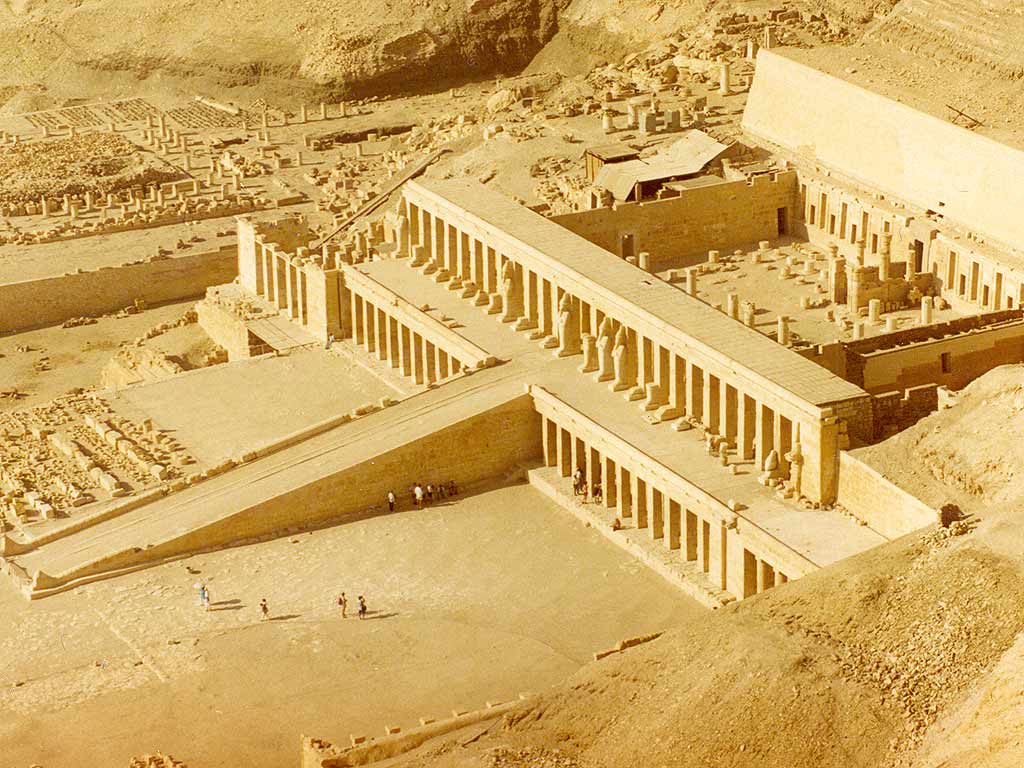There have been multiple instances where women have taken power positions and ruled lands, if not better than men but at par with them. One such ruler is this Egyptian woman whose name means the foremost of noblewomen – Hatshepsut. After being the daughter, sister and wife of Pharaohs for years, this woman became the most powerful person of Egypt.
Born as the eldest daughter of Thutmose I and married to her half-brother Thutmose II, Hatshepsut lived much in the background during their reign. But things changed at the death of Thutmose II. This is when the throne passes on to Thutmose III, who is just an infant. Hence came the need for a regent. Thutmose III was the son of Thutmose II and Isis, a lesser Harem queen compared to Hatshepsut. So, Hatshepsut coming from a royal background, became the regent to her stepson – the young Pharoah. And that marks the beginning of her 21-year reign.
During the initial years of her reign, she was a conventional regent. But as time passed, she made gameplay and crowned herself as the Pharoah from a temporary regent. She adopted the complete royal titulary and exhibited herself with the traditional male regalia (traditional clothes of Pharoah, crown and false beard). But how did she do so?
She did so by claiming to be of divine birth. Hatshepsut made a powerful claim that during the night she was conceived, God Amun possessed her father, and he is the one who is guiding her to take charge. In ancient Egypt, the god Amun was believed to be the greatest one, and her claim gave her priority over Thutmose III. Moreover, she did not disregard Thutmose III but made him a co-ruler. This move, in fact, clearly stated where the power lay; she was powerful enough to make that decision.
But Hatshepsut could not have made this claim without the support of officials of the royal court. She successfully made such a powerful belief because of a group of loyal officials that she handpicked. These officials controlled the key positions of her kingdom. The loyalty of these officials also meant a sudden increase in private tombs at Luxor and Saqqara.
Among these officials, the most prominent one was Senenmut – the overseer of all royal work and the tutor of Neferure, Hatshepsut’s daughter. It was also believed that Hatshepsut and Senenmut were lovers, but there is no evidence supporting this.
Hatshepsut continues her reign based on trade rather than on war. Her reign was peaceful due to her successful military campaign in Nubia and expeditions to Punt. These campaigns and journeys bought back an incredible amount of gold, ebony, animal skins, etc., back to Egypt. These helped in the economic growth of Egypt.
Another royal responsibility that she took up was launching several architectural projects. In the temple complex of Karnak, she built a series of obelisks and the Palace of Ma’at. Her most important architectural achievement was the temple at Dayr – al – Bahri, the most sacred of sacred places.

All these things during her reign bought her popularity and reputation. These successes are also displayed in her mortuary temple. Her reign was a time of prosperity and peace for Egypt.
After her death, Thutmose III ascended the throne. She was given a burial in the valley of kings, but her memory was erased from history. During the end of his reign, Thutmose III removed all traces of Hatshepsut. Her monuments were defaced, and her status was smashed. Her name was also removed from the list of kings. But history found a way back when archaeologists began deciphering hieroglyphics at Dayr – al – Bahri. This restored her influential legacy.





Amazing! Hatshepshut seems like a smart lady, and a tactful ruler!
Loved the detailed research!
That is true. It was inspiring for me too to know her! Thank you for your amazing response!